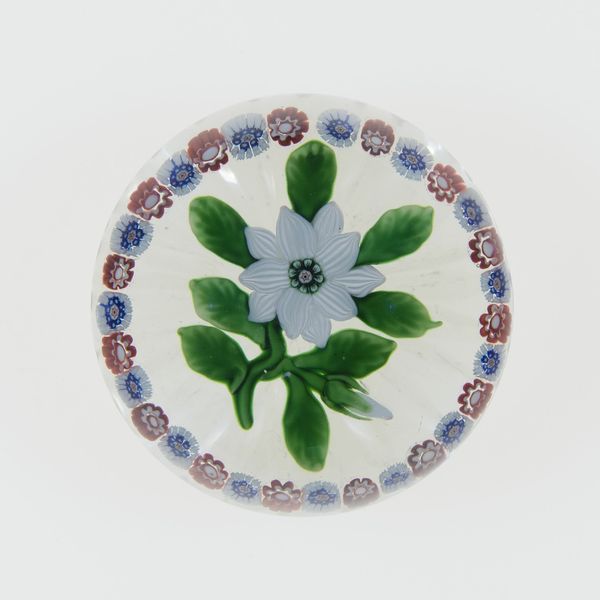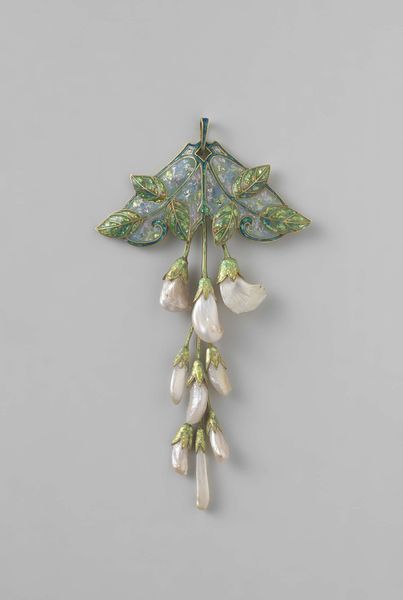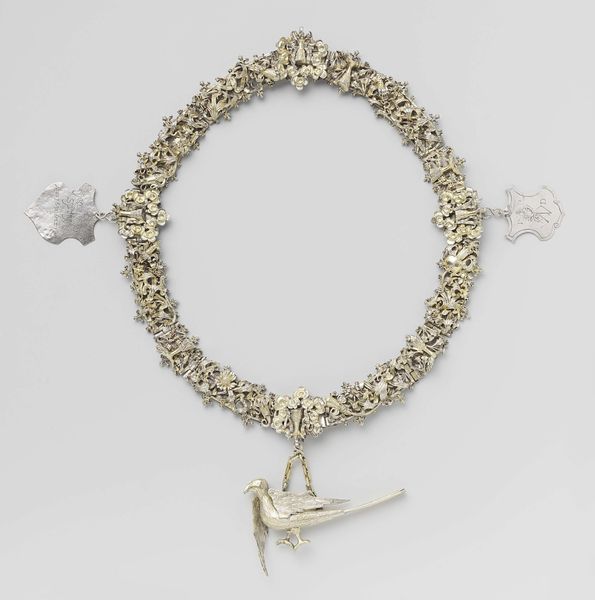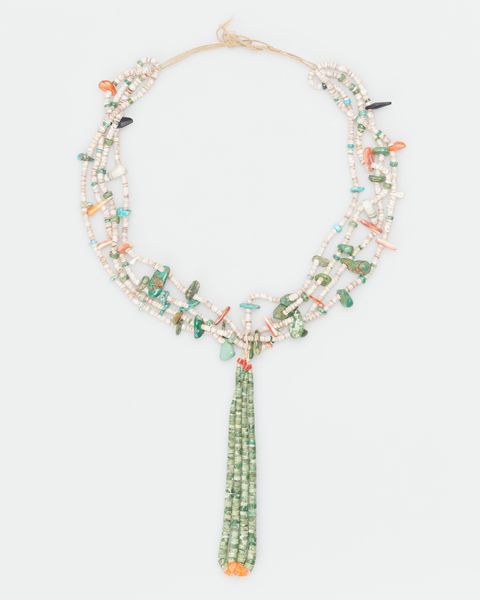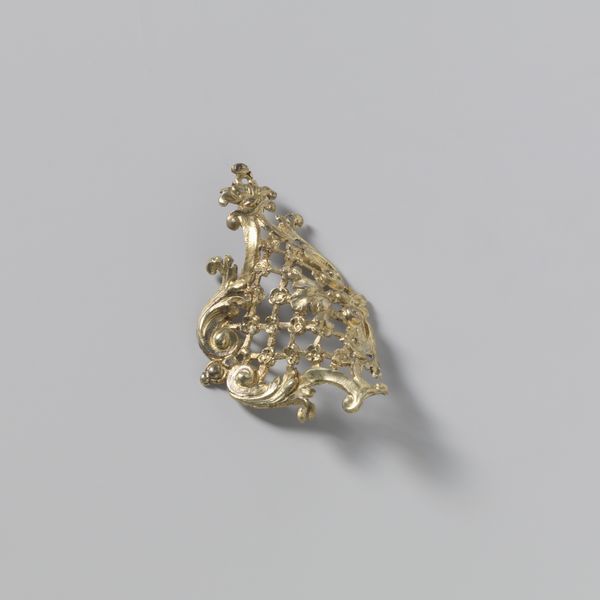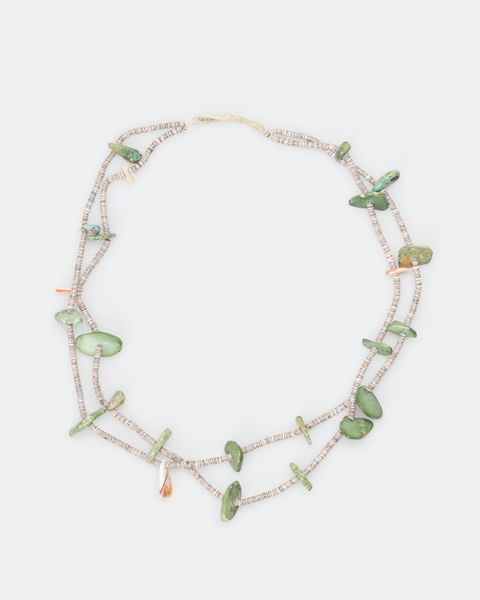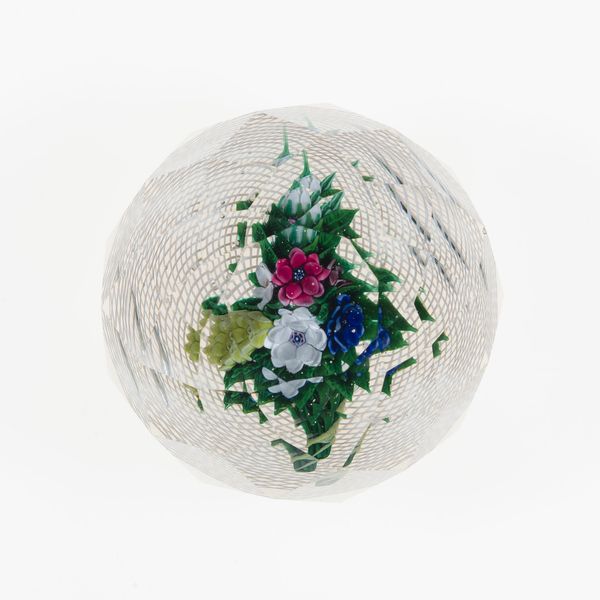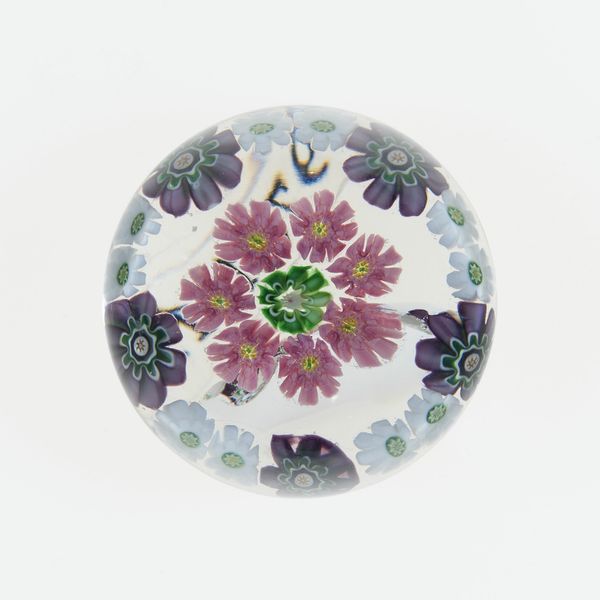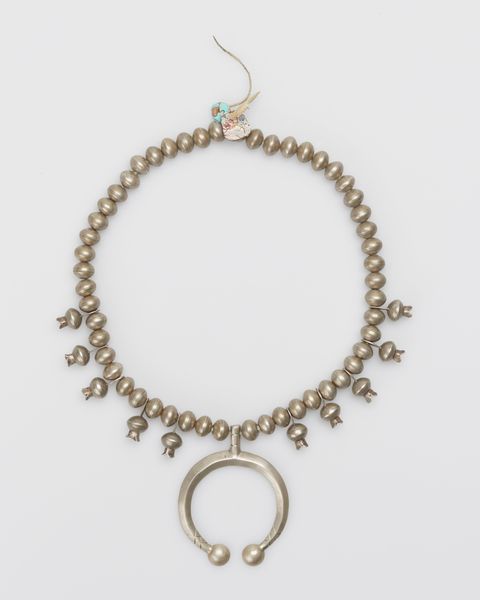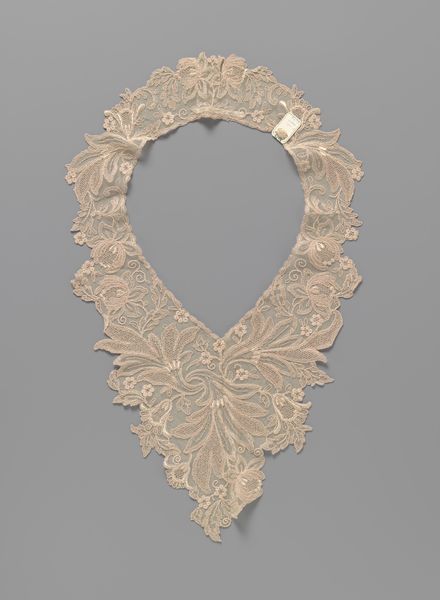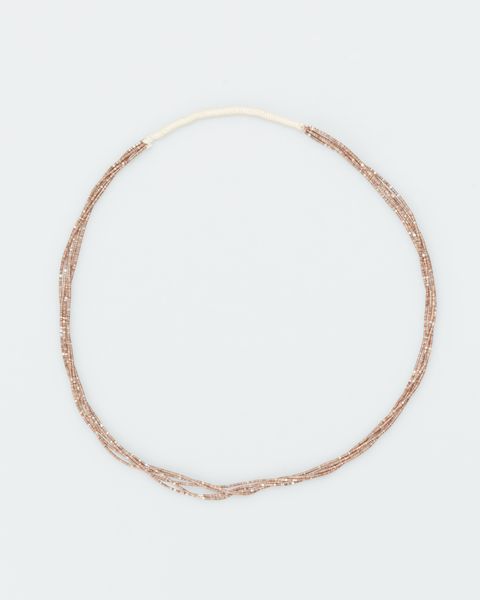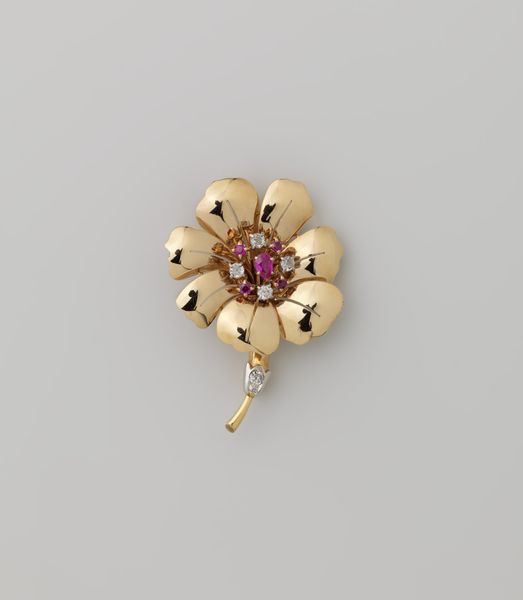
Bruidskroon en bijpassende corsage van oranjebloesem van was, katoen en papier 1898
0:00
0:00
Dimensions: length 57.0 cm, length 14.0 cm, width 9.4 cm
Copyright: Rijks Museum: Open Domain
This is a bridal crown and matching corsage of orange blossom made from wax, cotton and paper; although we don't know exactly when it was made, similar items have a long history in European and Western weddings. The orange blossom is an especially potent symbol. From at least the 17th century it signified chastity, purity, and innocence. This symbolism would have been especially prominent in societies where marriage was seen as a woman's primary role and virginity was highly valued. The tradition of bridal crowns reflects a broader culture in which marriage was a crucial social and economic institution. It's fascinating to consider the societal pressures and expectations that might have surrounded the wearing of such an object. To understand the bridal crown more deeply, one might delve into historical archives, etiquette books, and fashion journals. These sources can shed light on the social rituals, gender roles, and economic structures that shaped the meaning and use of such items. They remind us that even seemingly simple objects can be powerful indicators of the values and beliefs of a particular time and place.
Comments
No comments
Be the first to comment and join the conversation on the ultimate creative platform.
